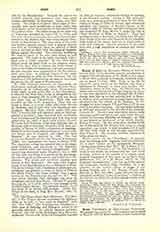

Bonizo of Sutri (or BONITHO), Bishop of Sutri in Central Italy, in the eleventh century, an adherent of Gregory VII and advocate of the ideals of that pope;. b. about 1045, probably in Cremona, Northern Italy; put to death July 14, 1090. Early in his life he joined the party known as the Pataria, and when a. subdeacon in Piacenza he came into conflict with Dionysius, bishop of that city. In 1074 he went to Rome, and won the favor of Pope Gregory, by whom he was soon appointed to the episcopal See of Sutri. Bonizo took part in several councils held in Rome; in 1078 he went to Cremona as papal legate and consecrated there the church of St. Thomas. In the struggle between Gregory VII and Henry IV he was ever on the side of the pope. He was seized by Henry in 1082 and entrusted to the custody of the antipope Clement III. About a year afterwards Bonizo made his escape, and lived for several years under the protection of Countess Mathilda of Tuscany. In 1086 he was present at the funeral of his friend, Anselm, Bishop of Lucca. He was, soon after, elected to the See of Piacenza by the Pataria, but owing to strong opposition was unable to take possession of it until the year 1088, when he was strongly supported by Pope Urban II. His enemies, however, contrived to bring about his death.
Bonizo wrote: (I) the “Paradisus”, or extracts from the writings of St. Augustine (still unpublished); (2) a short treatise on the sacraments (Muratori, “Antiquitates Italicae Med. Aevi”, III, in Migne, P.L., CL); (3) the “Decretum” or “De vita Christiana”, a work in ten books on ecclesiastical law and moral theology written at the request of a certain priest Gregory [fragments of this work are in Mai’s Nova. Bibliotheca, VII, iii, 1-76 (Rome, 1854)]; (4) “In Hugonem schismaticum”, now lost, probably against the schismatic Cardinal Hugo Candidus; (5) a description of the various classes of judges in the. Roman Empire and in the Roman Church (ed. Bluhme, in Mon. Ger. Hist. Leges, IV); (6) his most important work the “Liber ad amicum”, a history of the Church, in which the author relates events of his own times.
FRANCIS J. SCHAEFER

